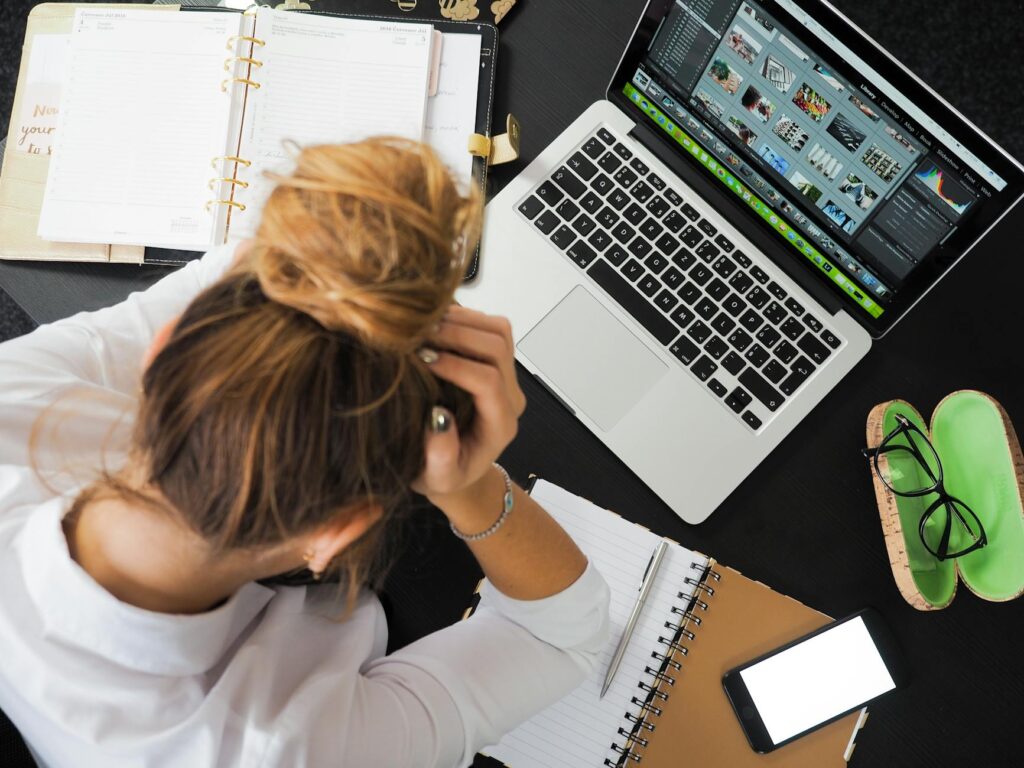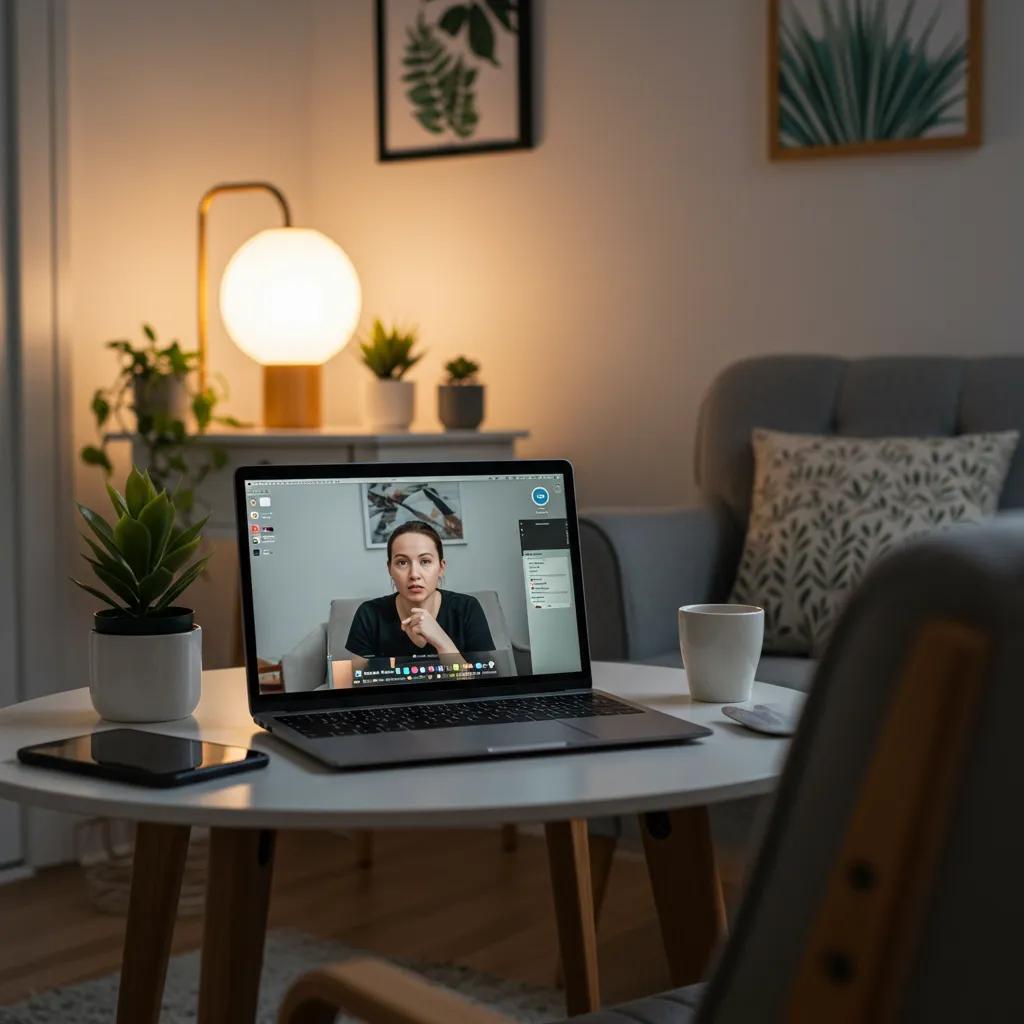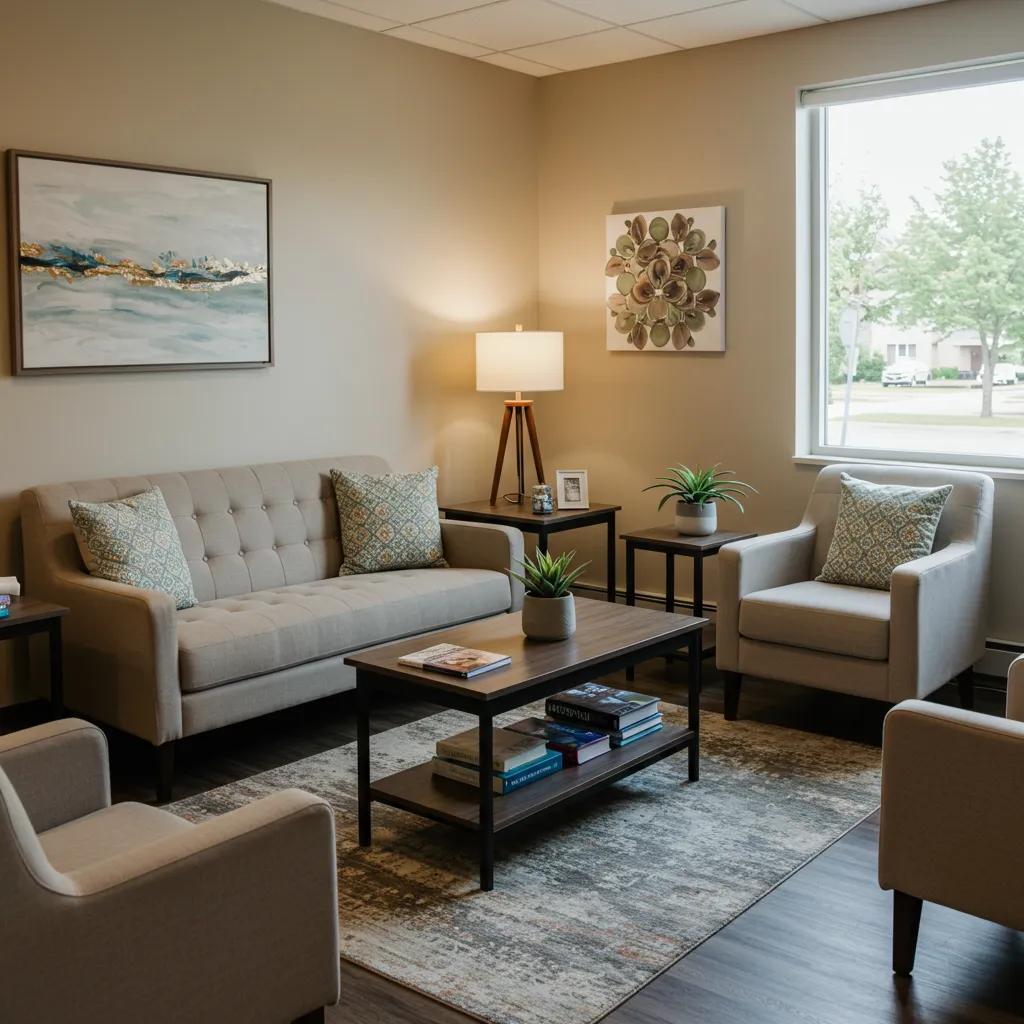Impact of Technology on Sleep
The pervasive use of technology in our daily lives has had a significant impact on various aspects of our well-being, including sleep. In this section, we will explore how technology use, particularly in the bedroom, can have adverse effects on sleep patterns and quality.
Technology Use in the Bedroom
It has become increasingly common for individuals, both children, and adults, to have electronic devices in their bedrooms. According to the Sleep Foundation, around 75% of children and 70% of adults use electronic devices in their bedroom or in bed. Having electronic devices in the bedroom creates the temptation to look at them if one wakes up during the night, potentially disrupting the ability to fall back asleep. This emphasizes the negative impact of technology on sleep quality.
Disrupted Sleep Patterns
Excessive smartphone use, especially at night, can disrupt sleep due to the blue light emitted by smartphone screens. The blue light mimics the brightness of the sun and confuses the brain, leading to sleep disturbances. The light emitted by cell phone screens can disrupt melatonin production, a hormone that regulates sleep, leading to difficulty falling asleep or staying asleep, poor sleep quality, daytime fatigue, and increased mental health symptoms.
The impact of blue light emitted by screens can interfere with natural circadian rhythms, the body’s internal clock that regulates sleep-wake cycles. This disruption can lead to sleep disturbances and poor sleep quality. Research has shown that poor sleep is closely linked to mental health issues, including anxiety and depression.
To mitigate the negative impact of technology on sleep, it is recommended to establish a technology-free bedroom environment. This means removing electronic devices from the bedroom or keeping them out of reach during bedtime. Creating a sleep-friendly environment can contribute to better sleep hygiene and overall well-being.
By being mindful of technology use in the bedroom and adopting healthy sleep habits, individuals can promote better sleep quality and reduce the potential risk of developing anxiety and depression related to disrupted sleep patterns.
In the next sections, we will explore the impact of technology on mental health, including the influence of social media, anxiety, and self-esteem. Stay tuned to gain a deeper understanding of how technology affects our mental well-being and discover strategies for maintaining a healthy relationship with technology.
Social Media and Mental Health
In today’s digital age, the impact of technology on mental health, particularly in relation to social media, has become a growing concern. Excessive use of smartphones and social media platforms can contribute to feelings of depression and anxiety. Two key factors in this regard are smartphone addiction and social media comparison.
Smartphone Addiction
Smartphone addiction is a serious mental health issue that affects millions of users worldwide across various demographics. Excessive use of smartphones can interfere with social activities and lead to poor sleep quality, heightened levels of stress, anxiety, and depression. A 2016 study found that individuals who scored high on the fear of missing out tended to overuse their phones, leading to higher anxiety and depression scales [1].
When individuals become dependent on their smartphones, they may experience difficulties in focusing on real-life interactions and maintaining meaningful relationships. The constant need to check notifications and engage with social media can take a toll on one’s mental well-being.
Social Media Comparison
Another significant aspect of technology’s impact on mental health is the phenomenon of social media comparison. Platforms like Facebook, Instagram, and Twitter provide users with a constant stream of carefully curated content from others’ lives. This exposure to seemingly perfect lives can lead to feelings of inadequacy, insecurity, and low self-esteem.
Studies have shown that heavy social media use is associated with a decrease in grey matter in the brain responsible for attention control, potentially contributing to symptoms of anxiety and depression. The constant exposure to images of people living seemingly perfect lives on social media can create unrealistic standards and fuel feelings of inadequacy and self-comparison.
It’s important to recognize that social media is often a curated highlight reel, presenting only the best aspects of individuals’ lives. Comparing oneself to these idealized images can lead to a distorted perception of reality and an increase in anxiety and depression symptoms.
To mitigate the negative impact of social media on mental health, individuals can take steps to manage their technology use. This includes setting boundaries, such as limiting screen time and designating tech-free zones or times of the day. Seeking professional support, such as therapy or counseling, can also provide valuable guidance in navigating the challenges associated with technology use and its impact on mental well-being.
By understanding the potential negative effects of smartphone addiction and social media comparison, individuals can take proactive measures to prioritize their mental health and maintain a healthy relationship with technology. It is important to remember that seeking support and finding a balance in technology use can contribute to overall well-being.
Technology and Anxiety
As technology continues to play a significant role in our lives, its impact on mental health, particularly anxiety, is an area of growing concern. In this section, we will explore two ways in which technology can contribute to anxiety: the effects of blue light and the risks of cyberbullying.
Blue Light Effects
Excessive smartphone use, especially at night, can have detrimental effects on sleep patterns and overall mental well-being. The blue light emitted by smartphone screens mimics the brightness of the sun and confuses the brain, leading to sleep disturbances. This disruption occurs because blue light interferes with the natural production of melatonin, a hormone that regulates sleep-wake cycles. When exposed to blue light before bed, the brain receives signals that it is still daytime, making it challenging to fall asleep and achieve restful sleep.
Poor sleep quality and insufficient sleep have been linked to mental health issues, including anxiety and depression. The impact of blue light on sleep can lead to daytime fatigue, increased mental health symptoms, and a heightened sense of anxiety.
To mitigate the effects of blue light on sleep and anxiety, it is recommended to limit technology use before bedtime. This includes avoiding screens for at least an hour before sleep, utilizing blue light filters or apps that reduce blue light emissions, and establishing a relaxing bedtime routine away from electronic devices.
Cyberbullying Risks
The rise of technology and social media has also brought about new challenges and risks, including cyberbullying. Cyberbullying refers to the use of technology to harass, intimidate, or harm others, often through social media platforms and messaging apps. The anonymity and wide reach of the internet can make cyberbullying particularly distressing and difficult to escape.
Experiencing cyberbullying can significantly impact an individual’s mental health, leading to increased anxiety and emotional distress. The constant exposure to negative and hurtful comments can create a sense of insecurity, erode self-esteem, and contribute to feelings of isolation and social anxiety.
To combat cyberbullying and its potential impact on anxiety, it is important to foster a safe and supportive online environment. This includes promoting digital citizenship, encouraging open communication about online experiences, and educating individuals about the importance of responsible online behavior. Additionally, individuals who experience cyberbullying should seek support from trusted adults, friends, or mental health professionals to address the emotional impact and develop effective coping strategies.
By recognizing the effects of blue light and the risks of cyberbullying, individuals can take proactive steps to minimize anxiety related to technology use. It is essential to establish healthy technology habits, prioritize quality sleep, and foster positive online experiences to promote overall mental well-being. For more strategies on managing anxiety and leveraging technology in a healthy way, refer to our article on how to deal with depression and anxiety.
Get your question answered now.
Effects on Self-Esteem
The use of technology, particularly social media platforms, can have a significant impact on self-esteem, leading to distorted reality perception and feelings of comparison, which can contribute to depression and anxiety.
Distorted Reality Perception
One of the ways technology can affect self-esteem is by creating a distorted perception of reality. Social networking sites (SNS) like Facebook have been associated with low self-esteem, particularly in children and adolescents. Constant exposure to carefully curated posts and images showcasing seemingly perfect lives and appearances may lead individuals to compare themselves unfavorably, feeling inadequate or inferior.
The altered impression of physical and personality traits of other users on social media platforms can lead to incorrect conclusions and perceptions about oneself and others, further negatively impacting mental health, especially in individuals with depressive predispositions. It’s important to remember that what is presented on social media is often a highlight reel, and comparing oneself to these idealized versions can be detrimental to self-esteem.
Comparison and Depression
Social media use has also been linked to increased symptoms of anxiety and depression. The constant exposure to images and posts of people living seemingly perfect lives on social media platforms can contribute to feelings of inadequacy and inferiority, exacerbating anxiety and depression. Individuals may compare their own lives, achievements, and appearances to those of others, leading to a negative self-perception and a sense of falling short.
Research suggests that individuals with lower self-esteem tend to be more active online, engaging in self-promotional content on their SNS profiles [4]. This can create a cycle where individuals seek validation and approval through social media interactions, further perpetuating feelings of inadequacy when these expectations are not met.
It’s important to be mindful of the potential negative impact of social media and technology on self-esteem. Practicing self-compassion, setting boundaries with technology use, and focusing on genuine connections and real-life experiences can help mitigate the negative effects on self-esteem and reduce the risk of depression and anxiety.
To learn more about managing depression and anxiety, you may find our articles on what causes depression and anxiety and how to deal with depression and anxiety helpful resources.
Strategies for Healthy Tech Use
In a world where technology is pervasive, it’s important to develop strategies for healthy tech use in order to mitigate the potential negative impacts on mental health. Here are two key strategies that can help individuals manage their technology habits and seek professional support when needed.
Managing Technology Habits
One of the most effective ways to maintain a healthy relationship with technology is to establish boundaries and manage technology habits. This includes creating designated tech-free zones or times, such as keeping electronic devices out of the bedroom. Having electronic devices in the bedroom can create a temptation to look at them if one wakes up during the night, potentially disrupting the ability to fall back asleep. By creating a technology-free bedroom, you can enhance sleep quality and prevent problems associated with using electronic devices at night.
Additionally, practice mindful and intentional technology use. Be aware of the amount of time spent on digital devices and set limits to ensure a healthy balance between screen time and other activities. Consider using apps or features that track screen time and provide reminders for taking breaks. Taking regular breaks from technology can help reduce the risk of becoming overly reliant on it and experiencing negative effects on mental well-being.
Seeking Professional Support
If technology use begins to negatively impact mental health and well-being, it’s important to seek professional support. A mental health professional can provide guidance, support, and strategies for managing and coping with the effects of technology-related anxiety and depression. They can help individuals develop personalized strategies for healthy tech use and address any underlying mental health concerns.
Professional support may involve therapy, counseling, or other evidence-based interventions to help individuals navigate the challenges associated with technology use. A mental health professional can also provide tools and techniques for managing stress, anxiety, and depression that may arise from excessive or unhealthy technology habits.
Remember, seeking professional support is a proactive step towards better mental health. If you or someone you know is experiencing significant distress or impairment due to technology-related anxiety or depression, reaching out to a mental health professional can provide the support needed to navigate these challenges.
By managing technology habits and seeking professional support when necessary, individuals can take proactive steps towards maintaining a healthy relationship with technology and mitigating the potential negative effects on mental health. It’s important to remember that everyone’s relationship with technology is unique, so finding strategies that work best for you is key.
Family and Tech Usage
When it comes to the impact of technology on mental health, it’s essential to consider the role of family and tech usage. Setting device limits and promoting good sleep hygiene within the family can help mitigate the negative effects of technology on mental well-being.
Setting Device Limits
In today’s digital age, it’s common for households to have multiple electronic devices. However, excessive screen time and uncontrolled device usage can contribute to feelings of anxiety and stress. It’s important for families to establish clear device limits and boundaries to promote healthy tech usage.
A 2016 survey conducted by Pew Research found that the median U.S. household has five electronic devices, with 18% of homes being hyper-connected, containing 10 or more devices. By setting device limits, families can prevent excessive screen time and create a healthy balance between technology use and other activities.
Establishing device-free zones or specific times when devices are not allowed can help create boundaries and promote quality family time. For example, designating meal times or certain hours before bedtime as device-free can encourage meaningful interactions and help reduce anxiety associated with constant digital connectivity. By prioritizing face-to-face communication and engaging in activities that do not involve screens, families can foster healthier relationships and manage anxiety related to technology.
Promoting Good Sleep Hygiene
The impact of technology on sleep is a significant concern for families. The presence of electronic devices in the bedroom can disrupt sleep patterns and negatively affect sleep quantity and quality. Research has shown that increased screen time is associated with sleep anxiety, night waking, and overall sleep disturbance in children.
To promote good sleep hygiene, it’s advisable to establish technology-free bedrooms. This means keeping electronic devices, such as smartphones, tablets, and televisions, out of the bedroom. The presence of these devices can create temptations to use them if one wakes up during the night, leading to disturbed sleep and reduced sleep duration.
Encouraging a wind-down routine before bedtime that does not involve screens can also be beneficial. This may include activities such as reading a book, practicing relaxation techniques, or engaging in light physical activity. Creating a calm and soothing environment in the bedroom, free from the distractions of technology, can aid in reducing anxiety and promoting better sleep.
By setting device limits and promoting good sleep hygiene within the family, it’s possible to mitigate the negative impact of technology on mental health. Families can create a healthy balance between technology use and other activities, fostering stronger relationships and ensuring better sleep quality for all members. Implementing these strategies can contribute to a more positive and anxiety-free family environment.
Resources
- [1]: https://www.butler.org/blog/phone-affecting-your-mental-health
- [2]: https://therapybrands.com/blog/what-is-the-impact-of-smartphone-addiction-on-mental-health/
- [3]: https://therapyutah.org/impact-of-heavy-technology-use-on-mental-health/
- [4]: https://www.ncbi.nlm.nih.gov/pmc/articles/PMC4183915/
- [5]: https://www.sleepfoundation.org/bedroom-environment/technology-in-the-bedroom
- [6]: https://www.ncbi.nlm.nih.gov/pmc/articles/PMC5669315/
Did You Know? According to WHO, one out of every seven teens is struggling with some sort of mental illness.










